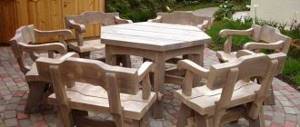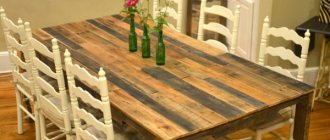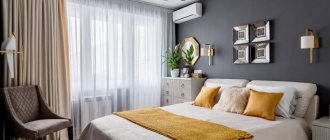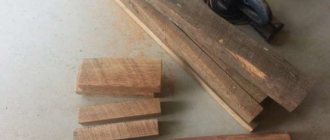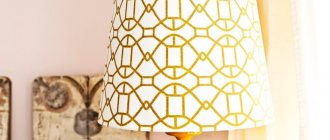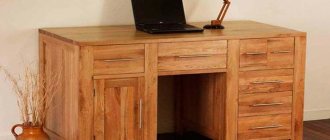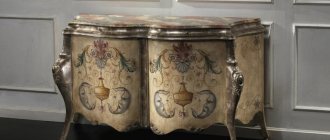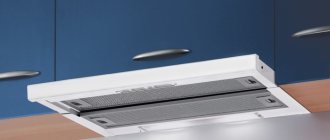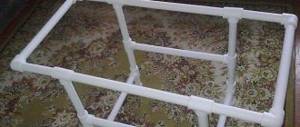Solid oak floors have always been considered a sign of respectability of the owner. The construction market is now overflowing with various types of exotic wood, the price of which is sometimes several times higher than the cost of proven, reliable oak.
But few people know that not all types of wood are suitable for our climate with humid, hot summers and dry, frosty winters.
Photo of an oak floor.
Features of solid oak
Oak floors are time-tested, it’s not for nothing that products made from this noble wood have been popular for centuries.
Traditions do not change, oak was, is and will remain the most popular material in its price niche.
- Solid oak boards are currently inferior in price to some types of artificial parquet, but significantly superior to them in quality.
- The service life of this material is 2 times higher than that of its artificial analogues.
- Over time, the coating does not lose color, does not fade and has high wear resistance.
Natural product
- Even if the floor is not varnished or painted, its surface practically does not lose its aesthetic qualities and mechanical stability.
- Such coatings can be repaired much easier, faster and cheaper than parquet.
- This coating is resistant to sharp heels or heavy furniture, so it can be laid in restaurants, conference rooms or other public spaces.
- And most importantly, oak itself is pleasant and beautiful; it radiates gentle natural warmth.
Oak floorboard.
Board dimensions
- The thickness of the floorboard traditionally ranges from 15 to 50 mm. The most popular boards are 15 - 22 mm thick. From 28 mm and above they are taken less frequently, although they are considered more durable and of higher quality.
- The width of the floorboards ranges from 60 to 450 mm. But the most popular boards are 60; 80; 100; 120 mm. This is due to the fact that a narrow board is easier to install, plus wide floorboards are more problematic when deformed and replaced. Although a wide board visually makes the room more spacious, a narrow board makes the room appear longer.
- In terms of length, the most common range is from 0.5 to 3 m. There are specimens up to 9m, but extremely rarely, because they are difficult to pack, transport and there is more waste during installation.
Sizes vary
Selection
This concept means the division of wood by color, texture, pattern, presence of mottled spots or knots.
All this depends on the cut of the wood and, although manufacturers share many options, 3 are classically generally accepted.
- Radial is a cut made along the central part of the trunk. This material has a uniform pattern and solid color. Its price is the highest, since it is considered the most durable and cannot be deformed.
- A cut slightly removed from the middle is called tangential. Its color spread is somewhat larger and may have different shades from the middle to the edge. Knots are allowed. This type of forest is valued for its wavy pattern.
- Rustic cutting has the most affordable price, but any variation in color is allowed here and there are no restrictions on the number and size of knots.
Natural material: environmentally friendly and beautiful
Our industry offers more and more synthetic materials, but all of them are harmful to health to varying degrees. Therefore, many people lay down environmentally friendly coverings made from natural materials.
Options for natural flooring:
- Natural stone - granite, marble. Stone flooring is strong and durable, always hard and cold, more suitable for state rooms and reception rooms. Natural stone is used to make mosaic floors.
- Parquet - consists of wooden planks with grooves for connection. After assembling the parquet, it is sanded and varnished.
- Parquet board - has a multi-layer structure and is easy to lay; wooden blanks are supplied already varnished.
- Solid board - up to three meters long; craftsmen can lay it so that the floor looks like a monolith. They should be painted and updated periodically.
- Cork - made from the bark of the cork oak tree, thick and durable. Very warm and durable, providing good sound and heat insulation.
- Marmoleum is a natural linoleum made from linseed oil, pine resin and wood flour, very resistant to fire.
- Carpet - made from wool, cotton and silk. Good for children's room and bedroom.
Among the variety of natural coatings, everyone can find something suitable for themselves in structure, color, style or price.
Laying technology
Let's prepare everything you need - and go!
Before starting work
- Naturally, the first thing you should pay attention to before laying an oak floor is the base. The base can be a slab flooring made from chipboard, OSB or thick plywood. Ordinary wooden joists. Or cement screed. We'll touch on each option.
- What all options have in common is that the base must be perfectly flat, horizontal, clean and dry. This is especially true for cement floor screed; its humidity should not exceed 4%.
Level the surface to perfection
- Before installation, you should unpack the material and leave it in the room where installation is planned for at least a week to adapt to the environment.
Important: solid oak flooring is strictly not recommended for use as a finishing coating for underfloor heating systems.
Laying on slab flooring
Now this type of installation is the most common, since oak flooring is expensive and the thicker the floorboards, the higher the price. And on a slab flooring you can lay thin, relatively inexpensive boards, plus it is very easy to lay oak floors on such a base with your own hands.
You only need material and tools, and instructions are given below.
Laying on slabs.
- First, pay attention to the damper gap; it is necessary for any type of flooring; for oak, 10 mm is enough. As a rule, when installing slab flooring, a damper tape is installed; it is quite sufficient.
- The boards are connected using the tongue-and-groove principle. The first row is laid in the direction of the groove towards the wall and is fastened on top near the wall with a self-tapping screw, which is subsequently covered with a plinth.
- On the opposite side of the board, in the upper corner above the tenon, at an angle of 45 - 50˚, a through hole is drilled. Through it, with a self-tapping screw, the bar is attached to the base. The screw itself will be covered with the next strip.
- You can assemble it differently: turn the tenon towards the wall, fix it with a self-tapping screw, and then, using special metal brackets, assemble the rest of the structure and fix it to the base.
- When installing a solid oak floor on a slab flooring, we do not recommend installing it with glue, since later, if repairs are necessary, disassembling it will be problematic.
Laying diagram.
Laying on joists
Laying on joists is also not difficult. But this option is usually used for thick boards. So, for example, if the span between the joists is 60 cm or more, then the board should have a thickness of at least 40 - 45 mm. But such floors are considered the most durable.
The principle of laying on logs.
The whole principle of installation is similar to installation on a slab flooring, only the boards are attached with self-tapping screws to the joists.
Laying on screed
This type of installation is less common, but it can be laid on the screed in 2 ways.
- Cover the concrete screed in several layers with synthetic soil and let it dry thoroughly. Next, apply two-part synthetic parquet adhesive with a notched trowel and lay the oak floor.
- This method is also called floating. First, it is advisable to apply primer, then lay a backing in the form of foamed polyethylene; you can use foamed polyethylene covered with foil. Next, apply the first strip to the stop of the damper gap and tightly, using a locking connection, assemble the entire structure.
Important: if you choose a method in which the planks are glued to the base, you should not immediately mix a large amount of glue, it hardens quickly.
Unusual floors in the apartment: 3D self-leveling floors
The latest achievement in interior decoration is the use of polymer coatings with 3D patterns in various color combinations, using ornamental panels, photographs, airbrushing, lighting and other techniques. All these pictures are laid between different layers of polymer coatings, which makes the image three-dimensional.
The undoubted advantages of this coating can be considered:
- Self-leveling flooring is easy to match to any interior style;
- Floors can delight you with their exclusive appearance, perfect evenness and elegance for a long time, since polymer flooring lasts up to 25 years;
- The coating is heat-resistant and prevents fire even from open fire;
- The floor is not slippery, it can be placed in the bathroom or children's room, in the hall and living room;
- The polymer coating does not emit dangerous fumes and does not cause allergies.
The choice of deep pattern composition is limited only by the financial capabilities of the customer and his imagination.
When choosing a floor covering, you should take into account the individual characteristics of the premises and determine the requirements for the floor in a particular room, and only then choose the appropriate material according to the individual properties. The final choice of type of coverage depends on purely personal preferences and financial capabilities.
Interesting trivia
- Oak lends itself very well to tinting, and the color lasts well; this feature is often used by unscrupulous manufacturers. They take oak, subject it to special processing and sell it as an expensive exotic wood.
- With factory varnishing, the varnish on the board will never crack, but it will not be possible to achieve a perfectly flat surface; the joints on the plane will be visible.
- A bleached oak floor in an interior with a predominance of light colors will look ideal, but it is better to varnish it, since the natural solid wood will easily get dirty.
Bleached oak with revealed structure.
- One of the best options is an oil-coated board; its price is quite reasonable and its appearance is very decent. The only negative is that once every six months the oak floor covered with oil needs to be rubbed with mastic.
- When purchasing solid oak flooring, pay attention to the packaging. Such expensive material is usually packaged in corrugated hard cardboard and sealed in thermal film. If you are offered an unpacked board from an unclear warehouse, you should think twice.
Glass floor
A glass floor in an apartment is a non-standard approach to interior design. What could be more original? These are not just tiles made of transparent material, but a whole showcase under which you can place interesting designer pieces. The advantages and positive qualities include the following:
- Glass visually raises ceilings and increases space.
- Wide range of models.
- Opportunity to furnish your home in an unusual style.
- High reliability and durability. The material can withstand up to 400 kg per 1 sq. m.
Floor with glass insert
- Glass is not subject to destruction processes under the influence of biological factors.
- Resistant to moisture, fire and rust.
Despite all the positive qualities, glass floors have their drawbacks. The cost of material and installation is very high. Not everyone can afford such floors. The glass surface is quite slippery, which can lead to injury. Glass is also subject to mechanical stress. Scratch marks remain on it, which immediately spoils the appearance of the coating.
Progress does not stand still and designers are working to improve glass floors, minimizing the current disadvantages as much as possible.
